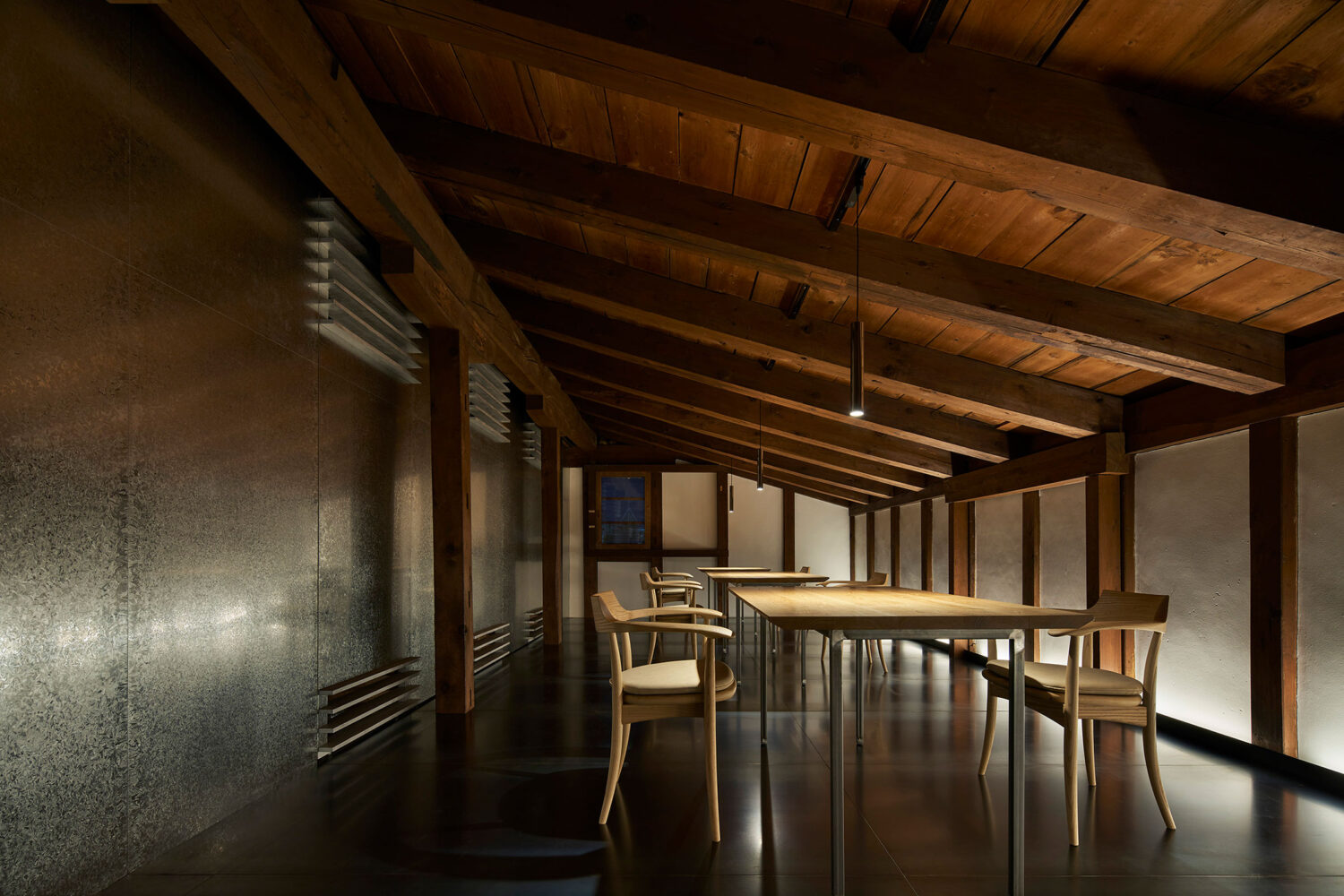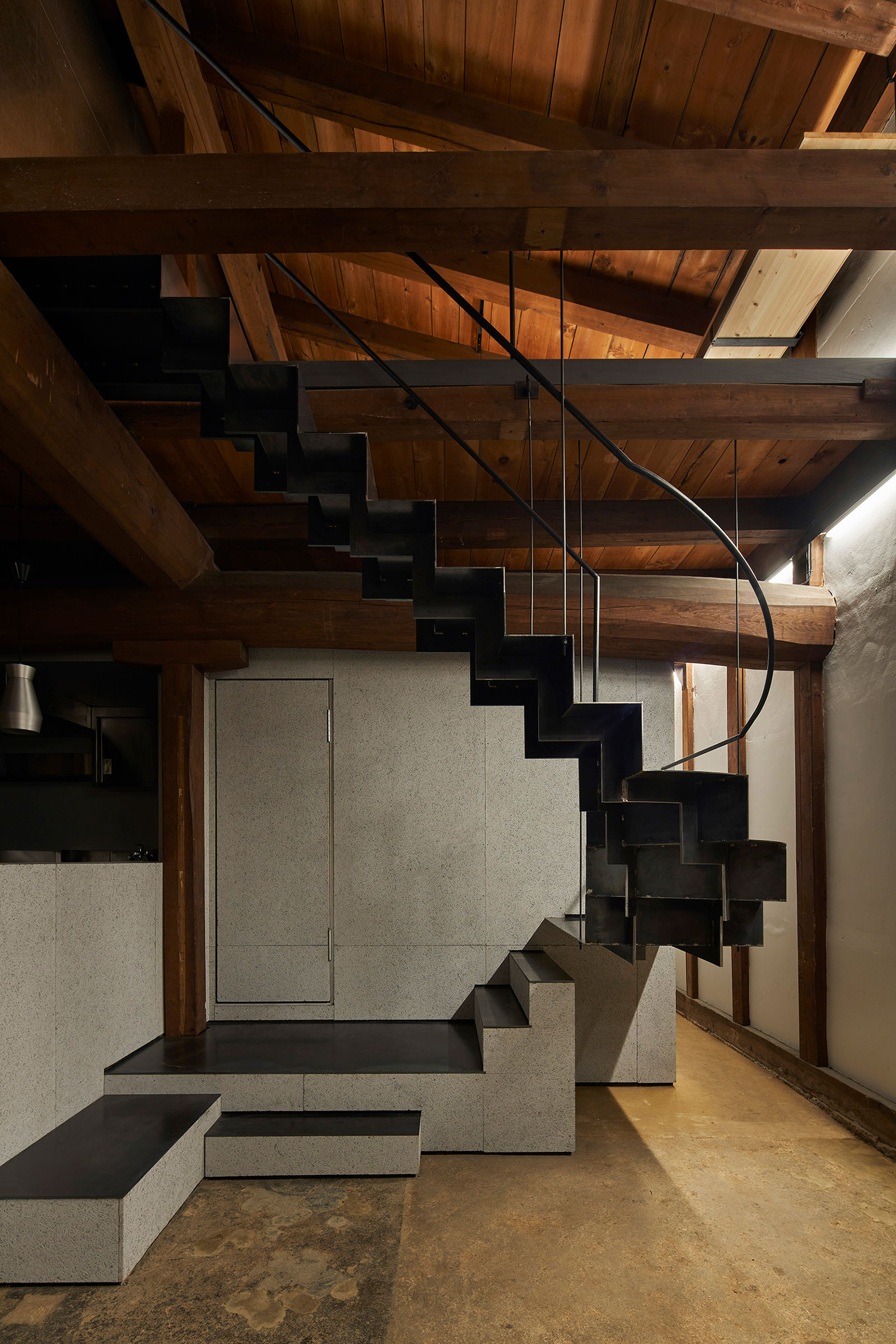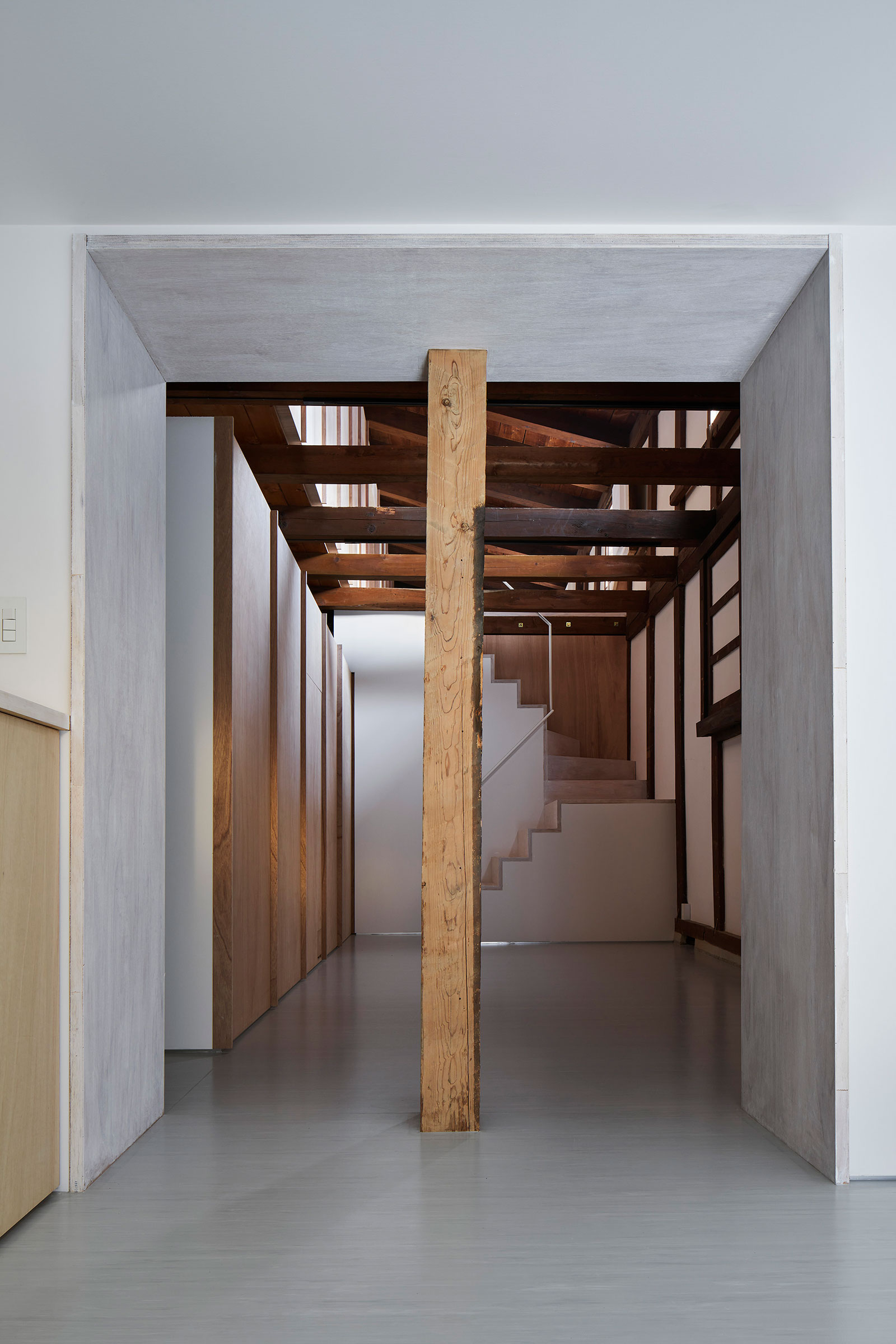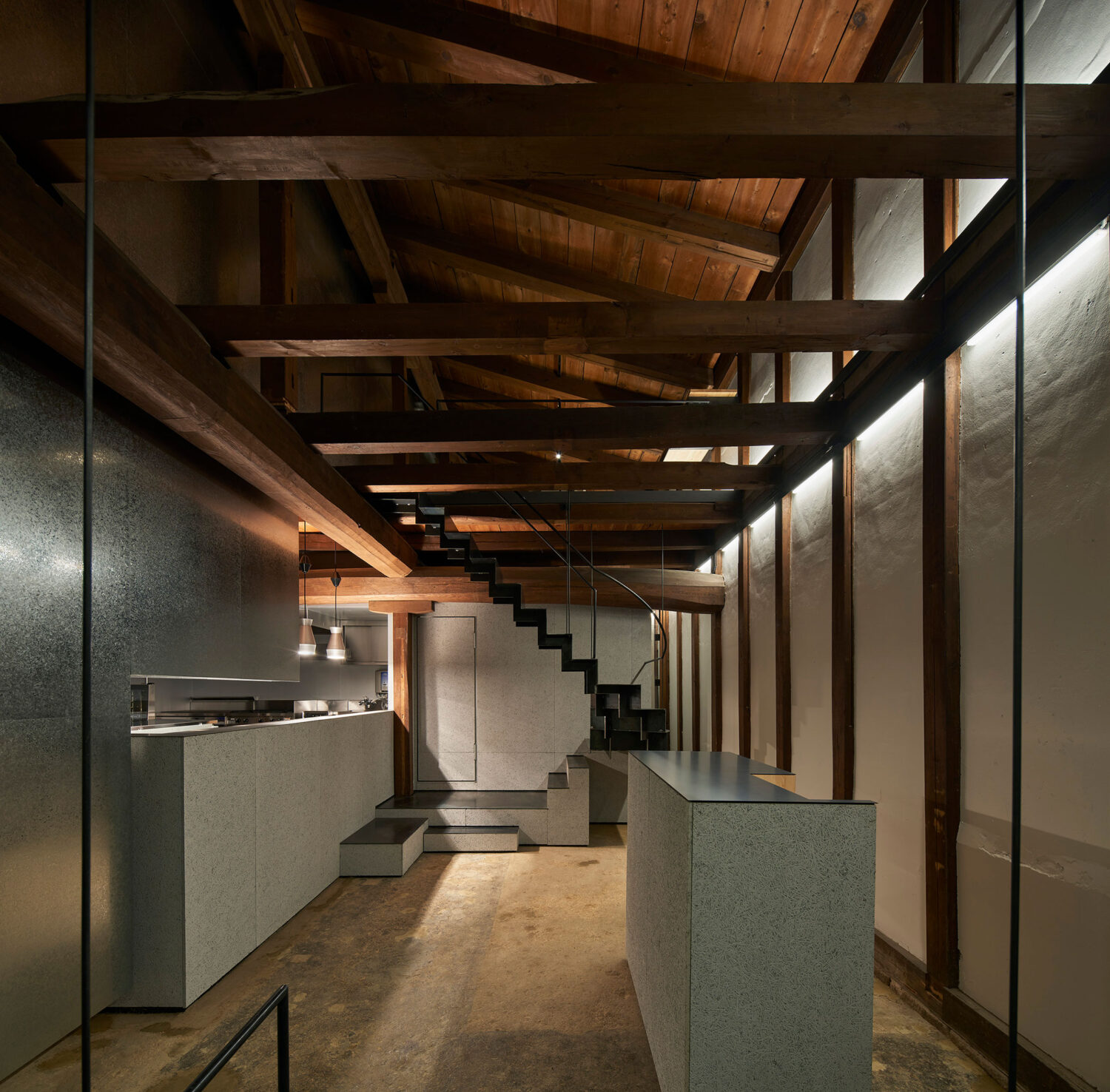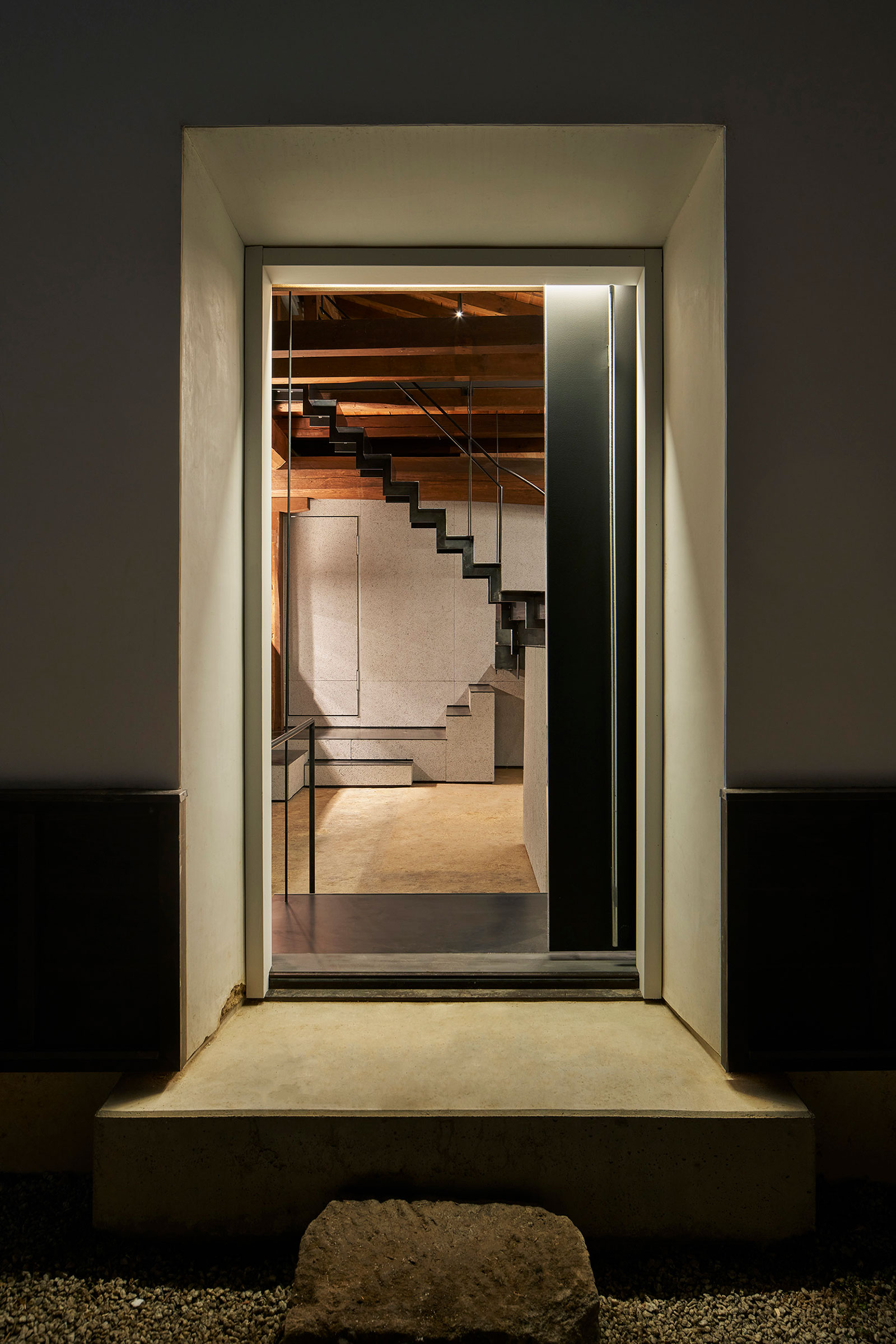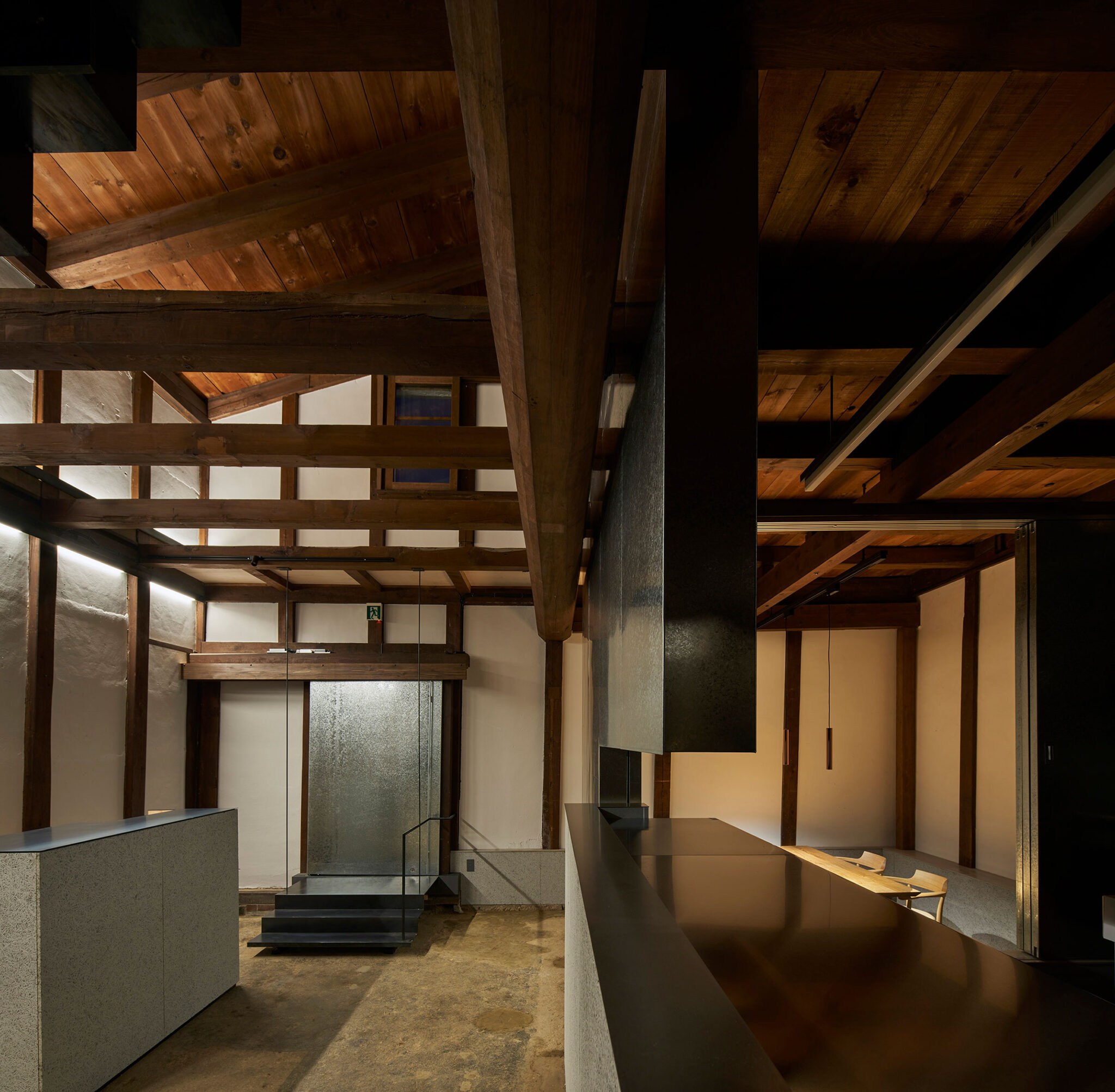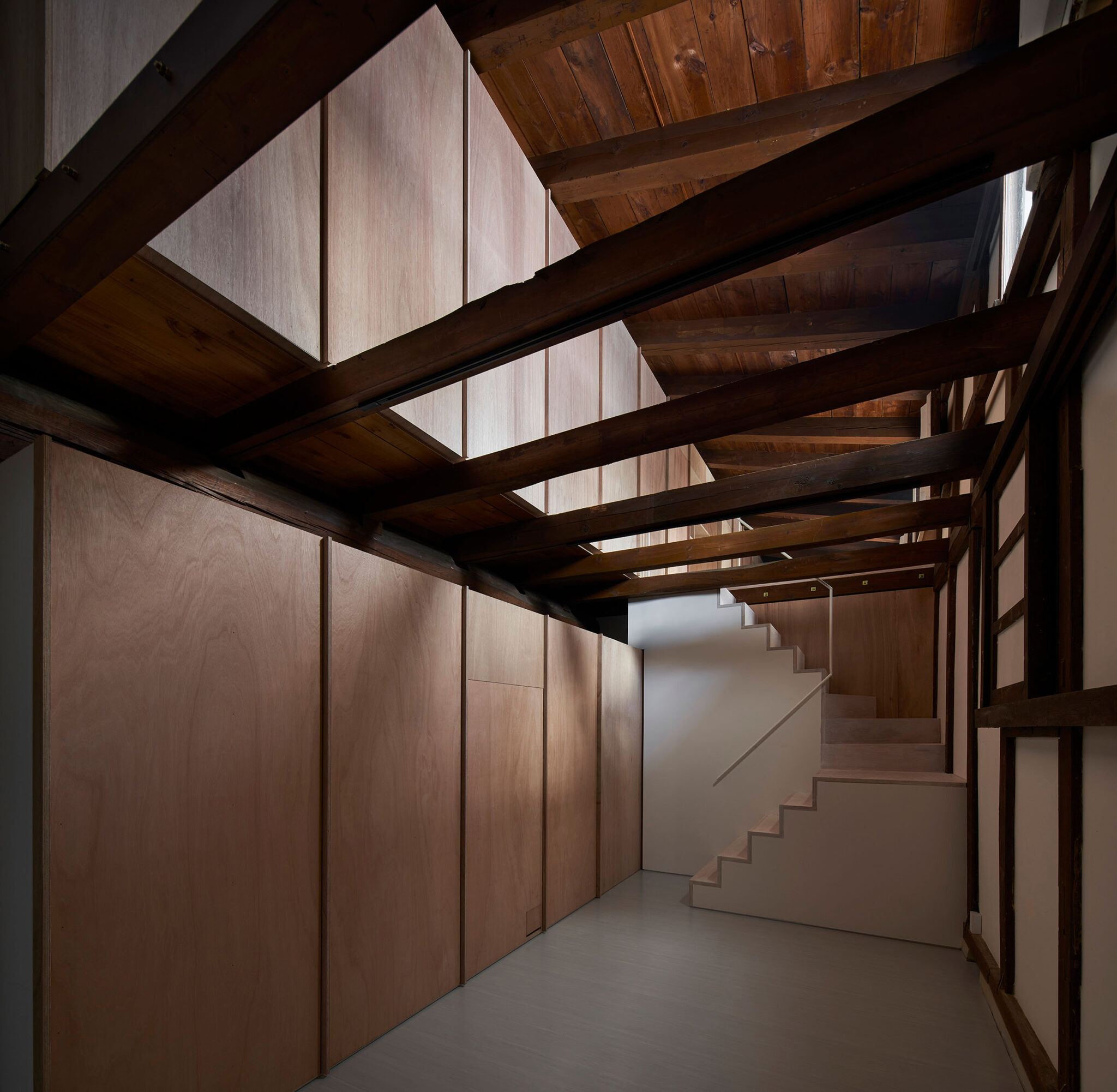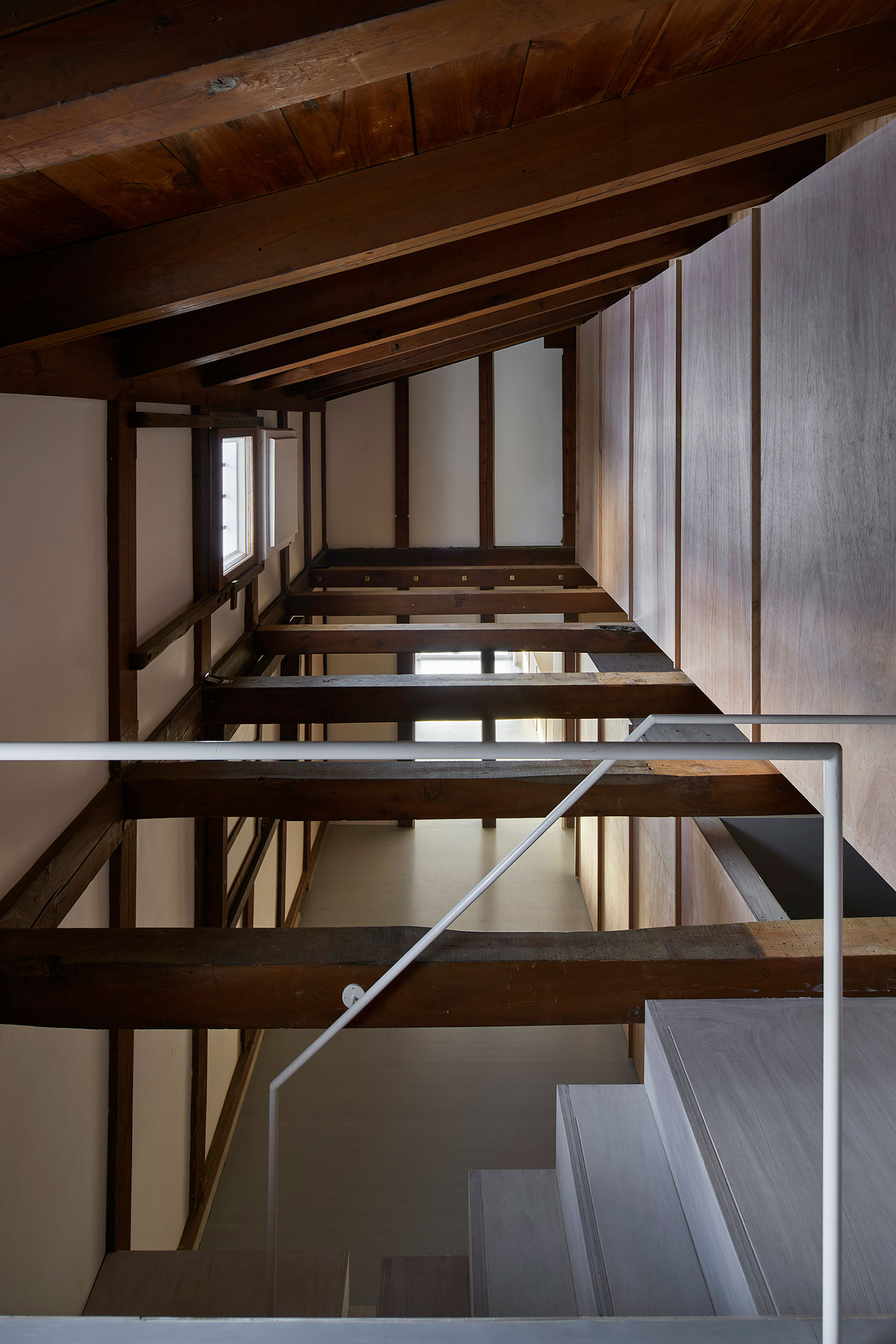NIM is a minimal house and restaurant located in Gifu, Japan, designed by Aoyagi Design. Due to the warehouse’s location within a traditional architectural preservation area designated by Takayama City, exterior alterations were kept to a minimum. However, the client requested a surprising interior transformation that couldn’t be anticipated from the outside. Upon visiting the existing warehouse for the first time, the designer was struck by the grand scale and robust framework. The structure featured impressive beams and columns made from large logs, with a distinct Takayama atmosphere. The designer decided to respect the spatial scale, the framework’s axis, and the unique ambiance of the dim warehouse. At the same time, they faced the challenge of inserting walls without disrupting the existing spatial characteristics. Additionally, with a limited budget, the project’s focus became the design and insertion of walls to separate the two functions.
The designer developed an approach that would use the inserted walls alone to establish the interior for the restaurant. To utilize the elongated east-west orientation and maximize natural light and ventilation in the residential area, the second floor was divided into north and south sections. The first floor followed a similar strategy. However, to avoid making it difficult to monitor the dining area from the kitchen, the space was divided east-west, creating an L-shaped connection between the upper and lower floors. The residential side adopted a similar L-shaped layout to facilitate a sense of connection between family members. After determining the general wall arrangement, the designer considered the effects the walls would have on the space. On the second floor, the walls were deliberately offset from the centerline of the ridge beam to emphasize the powerful framework without concealing it. Some wall sections were suspended from the floor above, creating a floating effect, and combined with a thin steel staircase to enhance the warehouse’s unique atmosphere.
Photography by Koji Fujii / TOREAL
